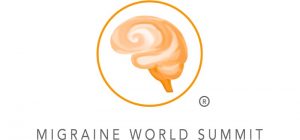
How many of us have had an entire day ruined by the wrong scent? Some with migraine need only walk by a perfume store, fill up a gas tank, or attempt to cook salmon for dinner and suddenly debilitating nausea, vomiting, and extreme pain ruins the entire night. While not talked about as frequently as light or sound issues, hypersensitivity to scents, known as osmophobia, is a major component of migraine for some, and it can be equally taxing.
Dr. Frederick Godley is an ENT-otolaryngologist and is the co-founder and current president of the Association of Migraine Disorders, a not-for-profit organization.
What’s osmophobia and how prevalent is it for people with migraine disease?
Dr. Godley: Osmophobia describes heightened sensitivity to smell that can either be unpleasant or repulsive. About half the people with migraine disease report having osmophobia, some describing odors that trigger an attack, and others who become sensitive to smell during their attack. There’s further variability because some have sensitivity during every attack, while others note that it only occurs some of the time. Osmophobia and anxiety strongly overlap as comorbidities. Our receptors transmit smell to a part of the brain that enables us to detect different scents, but also to other parts of the brain that relate memory to smells that have caused problems before, as well as to the pain-causing trigeminal nerve. This overlap produces anxiety: when the olfactory system becomes hyperactive, it also causes hyperactivity of our fight-or-flight reaction.
What are some of the most problematic scents?
Dr. Godley: Scents that we use to add pleasant smells—perfumes and colognes, aftershaves, deodorants, air fresheners. For many with migraine, these are triggers. Volatile chemicals are a second category, such as cleaning products. Finally, anything that has smoke, including engine fumes, cigarette smoke, vapors from burning plastic or wood, and even burned food can trigger an attack.
What can we do about hypersensitivity to smell?
Dr. Godley: The first strategy would be avoidance. You can use any barrier that works, including masks or regulating airflow, such as a fan. Since we can’t always control the environment outside of our homes, it’s essential to inform employers that the workplace can have odors that trigger migraine attacks. As with other forms of migraine, clinical psychologists can teach coping skills through cognitive behavioral therapy, and we can employ relaxation techniques to reduce anxiety. Medications can also help, including the anti-epileptics, venlafaxine, phenytoin, gabapentin, and acute anti-migraine medications, specifically the triptans.
Watch the full interview for answers to:
What is osmophobia and how is it related to migraine?What other conditions is osmophobia associated with?How prevalent is osmophobia among people with migraine?How do you know whether smells trigger a migraine attack, or whether someone with migraine is hypersensitive to smell during an attack?How does the brain perceive smell?
How is osmophobia related to depression and anxiety?Why are some people more sensitive to smell than others?Why are women more prone to osmophobia than men?
Are natural smells less apt to trigger a migraine attack than artificial smells?What are “phantom smells” and why do they occur?What other neurological conditions are associated with phantosmia?What can we do to overcome osmophobia?
Are there any medications or therapies for it?Can osmophobia worsen with age, or even with the progression of migraine?
Watch Dr. Godley’s interview preview here or order it as part of the Migraine World Summit package from this page.